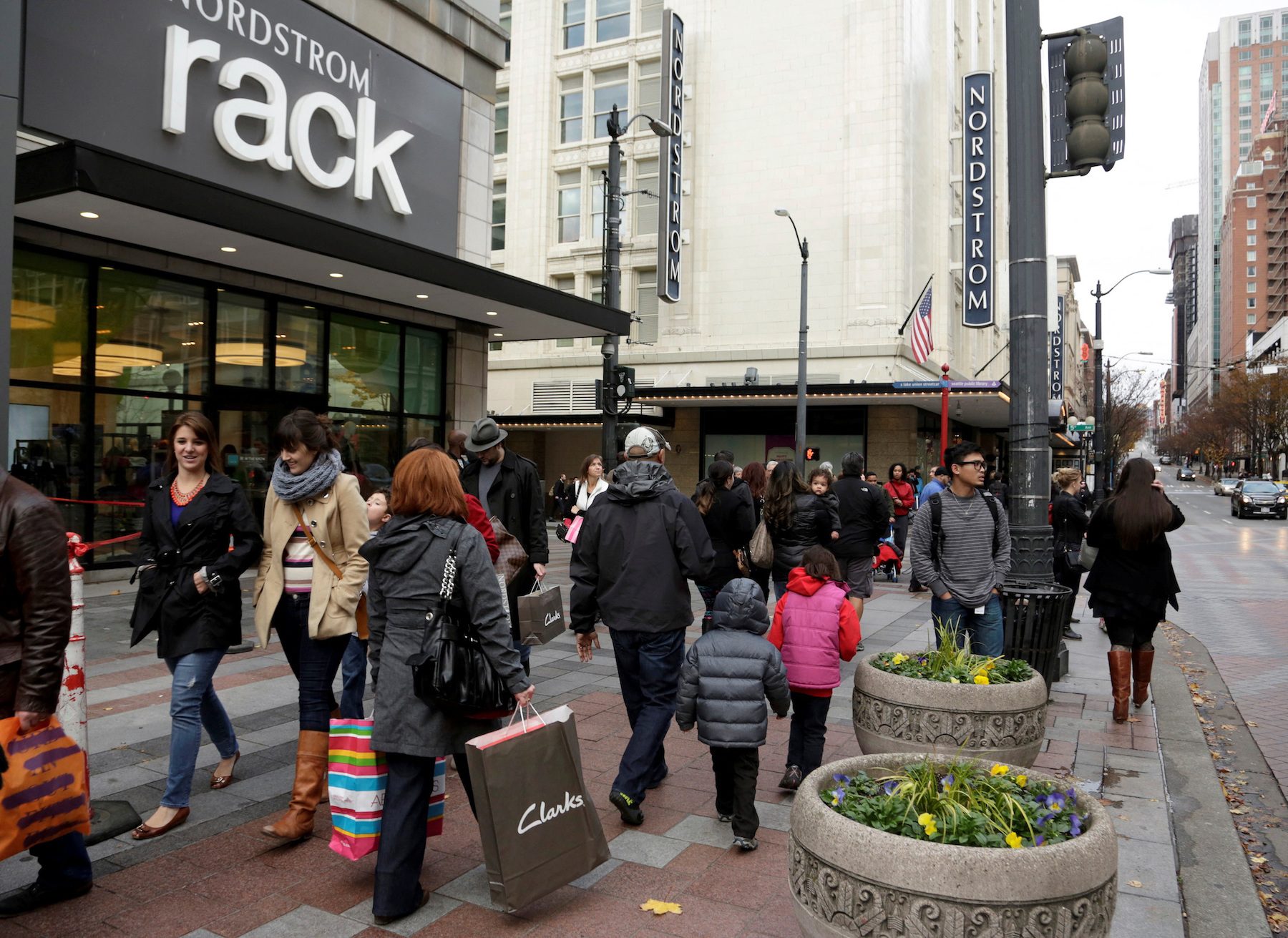SUMMARY
This is AI generated summarization, which may have errors. For context, always refer to the full article.

WASHINGTON, USA – US consumer confidence unexpectedly increased in March despite recent financial market turmoil sparked by the collapse of two regional banks, but Americans continued to expect inflation to remain elevated over the next year.
The consumer confidence survey from the Conference Board on Tuesday, March 28, also showed more consumers planned to buy motor vehicles and household appliances like refrigerators, washing machines, vacuum cleaners, and television sets over the next six months.
Consumers, however, were inclined to cut back discretionary spending, including on lottery tickets, visits to amusement parks, going to the movies, and dining out. But they intended to increase spending on healthcare, home or auto maintenance and repair, pet care, and personal grooming.
Though the correlation between confidence and consumer spending has been weak, the survey suggested that consumption could continue to grow at a moderate clip and keep the overall economy afloat.
“Tighter financial conditions have not materially impacted consumers’ confidence about the economy,” said Jeffrey Roach, chief economist at LPL Financial in Charlotte, North Carolina. “The availability of jobs and low unemployment more than offset the negative impact from recent banking crises.”
The Conference Board’s consumer confidence index rose to 104.2 this month from a reading of 103.4 in February. The cutoff date for the survey was March 20, 10 days after California-based Silicon Valley Bank collapsed. New York-based Signature Bank failed on March 12.
Economists polled by Reuters had forecast the index would be at 101.0. The rise in confidence contrasted with a deterioration in sentiment reported earlier this month by the University of Michigan. It was driven by consumers under the age of 55 and households with annual income of $50,000 and more.

The survey places more emphasis on the labor market. The share of consumers viewing jobs as “plentiful” fell, while the proportion saying jobs were “not so plentiful” rose. But the share of those saying jobs were “hard to get” dipped to the lowest level since April 2022.
The survey’s so-called labor market differential, derived from data on respondents’ views on whether jobs are plentiful or hard to get, fell to a still-high 38.8 from 40.7 in February, remaining consistent with a tight labor market.
This measure, which correlates to the unemployment rate from the US Department of Labor, was still the second highest since last June. The jobless rate was 3.6% in February.
“Views on the labor market remain broadly supportive, even if not quite as strong as last month, which points to continued resilience,” said Tim Quinlan, a senior economist at Wells Fargo in Charlotte, North Carolina.
Consumers’ 12-month inflation expectations rose to 6.3% from 6.2% last month. The Federal Reserve last week raised its benchmark overnight interest rate by a quarter of a percentage point, but indicated it was on the verge of pausing further increases in a nod to financial market stress.
The US central bank has hiked its policy rate by 475 basis points since last March from the near-zero level to the current 4.75%-5% range.
Stocks on Wall Street were trading lower. The dollar fell against a basket of currencies. US Treasury yields rose.
Trade flows weakening
Consumers’ plans to buy a home over the next six months were unchanged in March. Housing affordability, which deteriorated as mortgage rates surged in response to the Fed’s fight against inflation, is starting to gradually improve as home price gains continue to moderate.
The S&P CoreLogic Case-Shiller national home price index, covering all nine US census divisions, increased 3.8% on a year-on-year basis in January, a separate report showed on Tuesday, marking the ninth straight month of decelerating annual home price gains. That followed a 5.6% advance in December.
Annual house price growth remained strong in the Southeast, with double-digit gains in Miami and Tampa. Prices continued to fall in the West, with annual decreases in San Diego, Portland, San Francisco, and Seattle.
The cooling in overall house price inflation was reinforced by a report from the Federal Housing Finance Agency showing home prices climbed 5.3% in the 12 months through January after rising 6.7% year-on-year in December.
A survey from the New York Fed showed Americans expected a significant slowdown in house price gains over the next year.
“Pent-up buyer demand is eagerly responding to mortgage rate movements,” said Selma Hepp, chief economist at CoreLogic. “But, ongoing volatility in mortgage rates and fallout from the banking crisis could put a damper on spring home-buying season, particularly if credit tightening impacts mortgage availability.”
While the housing market appears to be finding a floor, trade flows are weakening.
A report from the Department of Commerce showed the trade deficit in goods increased 0.6% to $91.6 billion in February. The goods trade gap for the first two months of this quarter is slightly above the October-December quarter’s level.
Goods exports dropped 3.8% to $167.8 billion last month, led by an 11.9% plunge in motor vehicles and parts.
Imports of goods slipped 2.3% to $259.5 billion. Imports of motor vehicles and parts tumbled 7.1%, while those of consumer goods dropped 5.6%. Despite the overall decline in imports, businesses restocked goods at a steady pace in February.
The Department of Commerce also reported that wholesale inventories rose 0.2% in February. Stocks at retailers jumped 0.8%. A smaller trade deficit and the piling up of unsold goods at businesses contributed to the economy’s 2.7% annualized growth rate in the fourth quarter.
Goldman Sachs lowered its first-quarter gross domestic product tracking estimate to a 2.2% rate from a 2.4% pace on the trade data.
“We expect continued deterioration in trade levels throughout the first half of the year as the economy heads towards a recession,” said Matthew Martin, a US economist at Oxford Economics in New York. – Rappler.com
Add a comment
How does this make you feel?

![[OPINION] A rebellion long overdue](https://www.rappler.com/tachyon/2024/06/mass-uprising-matrix-june-4-2024.jpg?resize=257%2C257&crop_strategy=attention)








There are no comments yet. Add your comment to start the conversation.